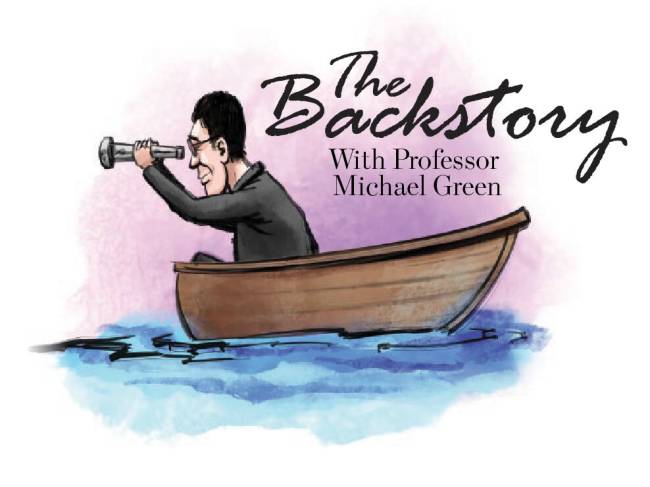The Backstory: A prehistory of Vegas visits
The roots of proto-Vegas visitations go back at least to the Old Spanish Trail. It’s unknown just when Spaniards, Mexicans, and Native Americans began using the trail from New Mexico to Southern California. We can trace the trail to the winter of 1829-30, when New Mexico trader Antonio Armijo’s party came through Las Vegas, possibly because of the guidance of scout Rafael Rivera, who may have been there first (the evidence is murky). Armijo helped establish the trail’s northern route, while William Wolfskill and George Yount helped set the southern portion through Needles. 
Las Vegas became the popular choice for horse thieves. It had ample water, thanks to the springs that bubbled up at the present site of the Springs Preserve. Both explorers and Native Americans were involved in these activities, including fur trapper Bill Williams and the Ute chief Walkara. The possibility of running into horse thieves discouraged more law-abiding folk from stopping in Las Vegas, but significant numbers still took advantage of its waters and the cottonwood trees in the vicinity.
In 1855, missionaries from the Church of Jesus Christ of Latter-day Saints built a fort-mission in the valley. What is now known as the Old Mormon Fort was constructed along a creek about four miles from the springs. The LDS Church’s Mormon Road from Salt Lake to San Bernardino intersected with the remnants of the Old Spanish Trail. After the missionaries left, the Mormon Fort became the Las Vegas Ranch, under the ownership first of Octavius Decatur Gass and then of the Stewart family. When Helen Stewart ran the ranch from 1885 until she sold it in 1902, it served as a roadside rest. You might call it an old-timey Airbnb.
Stewart raised her five children at the ranch after her husband Archibald died in a gun battle at nearby Kiel Ranch.With few settlers nearby, she welcomed the opportunity to visit with travelers and provided sustenance and company to those who stopped there. They did so for the same reason earlier travelers did: fresh water and a chance to get off a hot and dusty trail.
The land auction on May 15, 1905, established Las Vegas as a railroad town.The core of downtown Las Vegas was the rail depot where travelers stopped to rest or wait while the train was repaired in the nearby yards. Across from the depot were two hotels: the Overland and the Hotel Nevada. A couple of blocks over was Block 16, which started as the only spot in town where liquor could be sold and ended up becoming a red-light district. The new Las Vegas businesses catered to travelers and operated around the clock: Hotels had to be ready for customers at any time. So did the workers on Block 16.
In the mid-1920s, when the Union Pacific moved its repair shops to Caliente, Las Vegans looked for other means of prosperity. The trains, fortunately, still stopped at the depot. Meanwhile, the federal government built the Arrowhead Highway, and, in 1926, air service began. The young town opened a fairgrounds, and, seeking economic diversification, local businesspeople pushed for Hoover Dam construction to begin. They also pushed, momentously, to legalize gambling in Nevada, and on March 19, 1931, their efforts came to fruition. A city built around travelers just stopping through had taken its first steps toward becoming a destination. ◆












